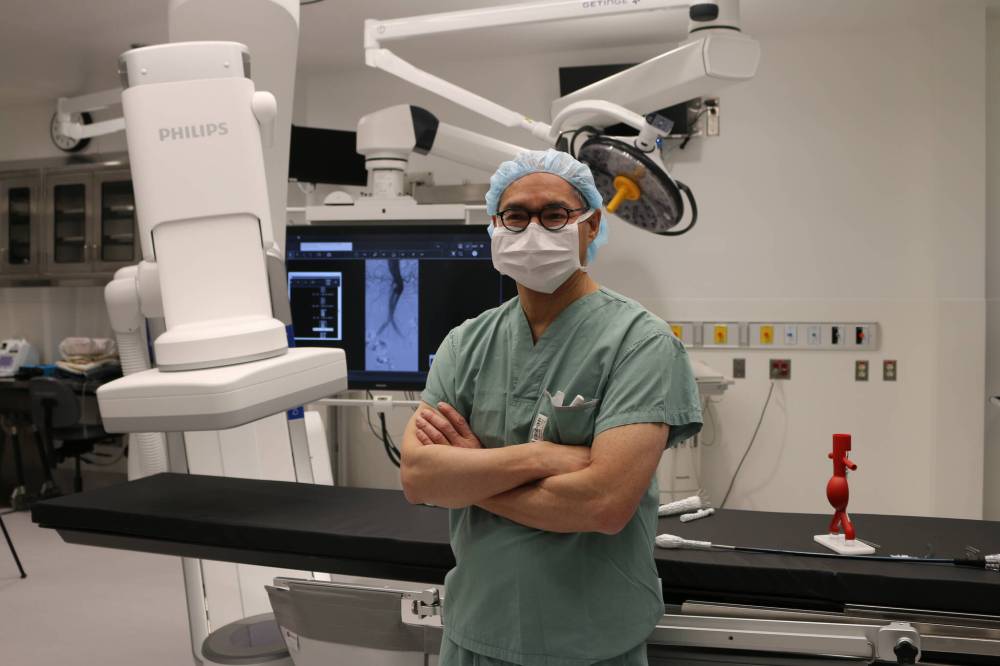Manitoba doctors say the continue to feel overworked, under-appreciated and overburdened by administrative demands, despite some improvements in the last year.
A report published by Doctors Manitoba Thursday, found nearly half of physicians are considering retiring (11 per cent), relocating (10 per cent) or reducing their working hours (24 per cent) over the next three years.
The data is based on the latest annual survey, which involved responses from roughly 35 per cent of licensed physicians in the province.

FREE PRESS FILES Doctors Manitoba president Dr. Randy Guzman (above) Manitoba has one of the biggest shortages of doctors in Canada. A recent survey shows nearly half of physicians are considering retiring (11 per cent), relocating (10 per cent) or reducing their working hours (24 per cent) over the next three years.
“We already know Manitoba has one of the biggest shortages of doctors in Canada,” Doctors Manitoba president Dr. Randy Guzman told reporters during a virtual news conference.
“While these numbers are concerning, they do help us understand what has to change.”
The report shows 165 physicians left their practice in 2023 — the highest in 11 years. On average, 213 doctors start practising in Manitoba annually, while 153 doctors move to other jurisdictions or retire.
Guzman said the report is intended to support the NDP government’s pledge to add 100 new doctors this year and noted some metrics are trending in the right direction.
Forty-six per cent of respondents are experiencing burnout and 54 per cent are experiencing distress. The rates have improved compared to last year’s report, which showed burnout and distress rates of 55 per cent and 63 per cent, respectively.
A little less than one-third described their workplace culture as positive, and 19 per cent said the health system is responsive to physicians’ concerns.
Last year, only 29 per cent of respondents reported positive workplaces and 17 per cent felt the system was responsive.
“We believe these are early signs that Manitoba has turned a corner toward improvement, but we have to work together to pick up the pace to improve the care for Manitobans who are waiting unreasonable lengths of time in the ERs, who can’t get their surgeries done… or simply can’t find a family doctor,” Guzman said.
Three-quarters of respondents said they have considered leaving or reducing their practice due to systemic or institutional issues that could be addressed with the proper interventions, the report says.
The document includes several recommendations, including that the government reduce administrative burdens, expand team-based care, improve engagement with physicians and make further investments in facilities and equipment.
“I think Manitoba is still a great place to work. The physician community is, despite the challenges, very engaged and very connected,” Guzman said.
Doctors Manitoba spokesperson Keir Johnson said the organization is looking at ways to more closely monitor physicians, including by introduce monthly, or even weekly, status reports.
The advocacy group is considering implementing exit interviews, which is not typically done here, he said.
“In addition to hearing from physicians on an annual basis, we can start to get our finger on the pulse faster in terms of the trends on how many people are leaving, why they are leaving and really understanding where there are some opportunities to fix some things that are causing those early departures,” Johnson said.
The government reserved $310-million in the 2024-25 budget to add 1,000 new health-care workers over the next year.
It also agreed with Doctors Manitoba’s recommendation to match the Canadian per capita average number of physicians within five years.
Overall, Manitoba has the second-lowest number of physicians per capita in Canada. It would take 445 more physicians to reach the national average, and 781 more to become the best in Canada, the report says.
tyler.searle@freepress.mb.ca

Tyler Searle
Reporter
Tyler Searle is a multimedia producer who writes for the Free Press‘s city desk. A graduate of Red River College Polytechnic’s creative communications program, he wrote for the Stonewall Teulon Tribune, Selkirk Record and Express Weekly News before joining the paper in 2022. Read more about Tyler.
Every piece of reporting Tyler produces is reviewed by an editing team before it is posted online or published in print — part of the Free Press‘s tradition, since 1872, of producing reliable independent journalism. Read more about Free Press’s history and mandate, and learn how our newsroom operates.
Our newsroom depends on a growing audience of readers to power our journalism. If you are not a paid reader, please consider becoming a subscriber.
Our newsroom depends on its audience of readers to power our journalism. Thank you for your support.